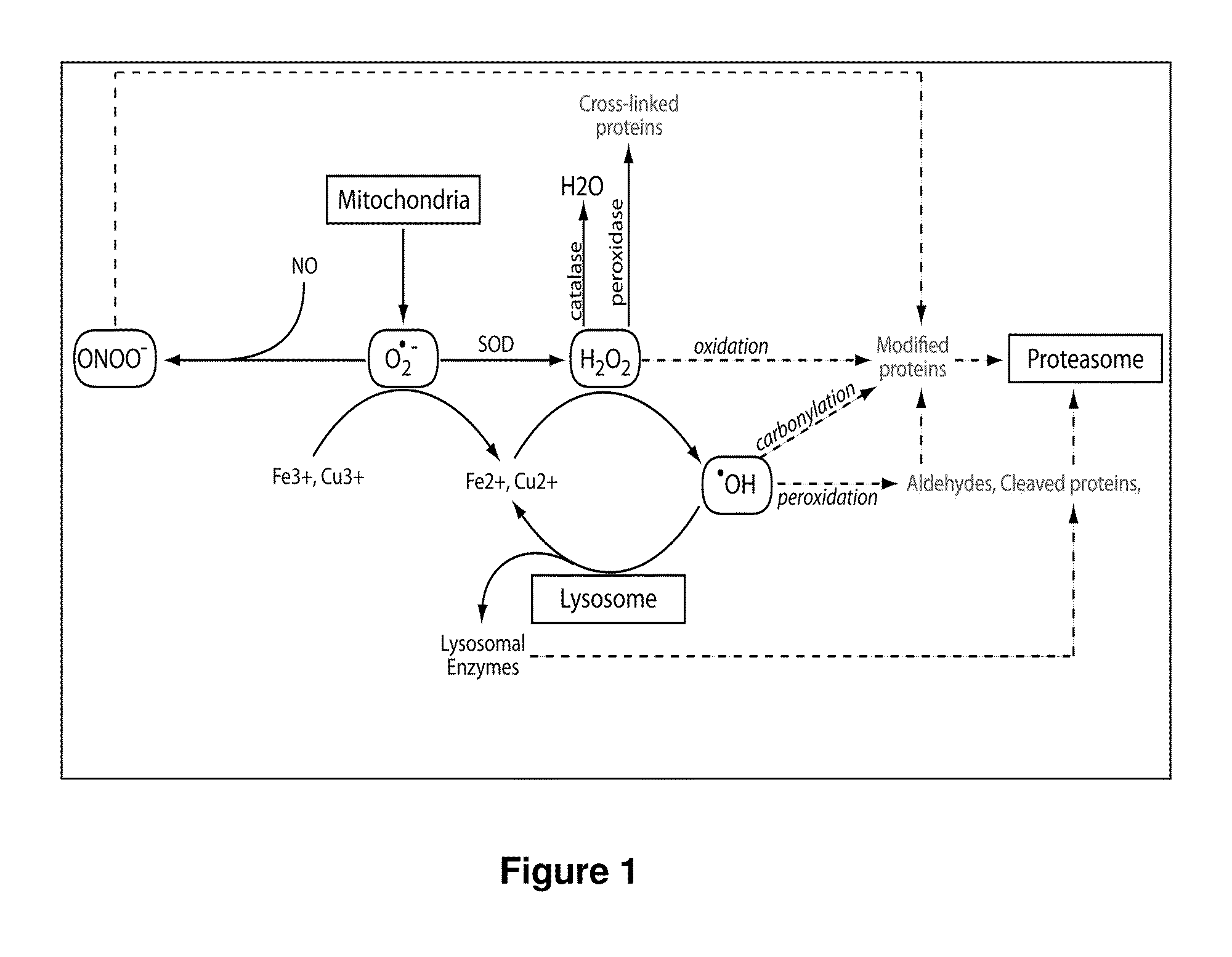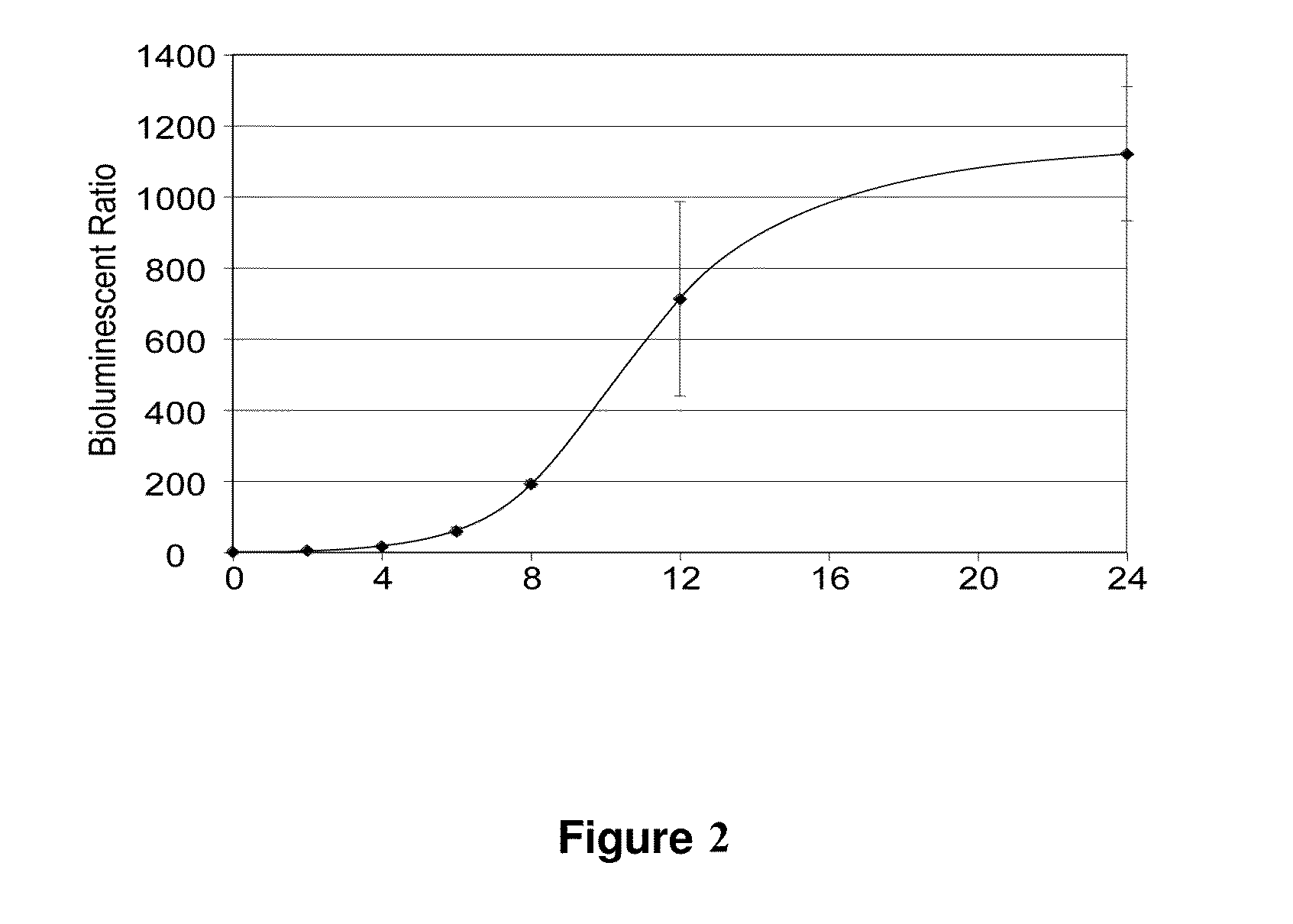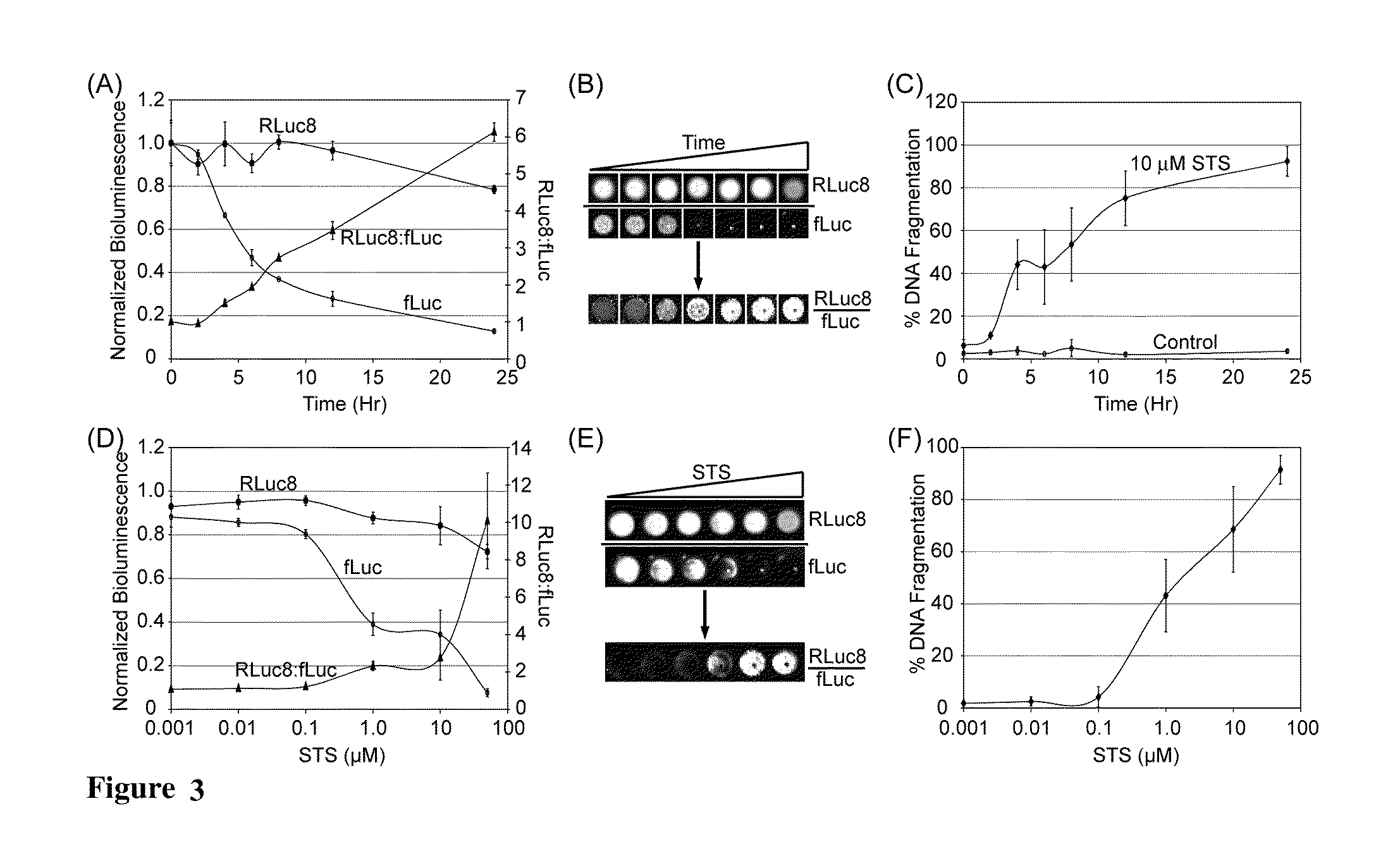Ratiometric bioluminescent sensor for imagining oxidative stress
a bioluminescent sensor and ratiometric technology, applied in the direction of instruments, diagnostic recording/measuring, ultrasonic/sonic/infrasonic diagnostics, etc., can solve the problems of rna, protein damage, and ros level increas
- Summary
- Abstract
- Description
- Claims
- Application Information
AI Technical Summary
Problems solved by technology
Method used
Image
Examples
example 1
RLuc8 Exhibits Longer Half-Life than Wild-Type fLuc and RLuc in Apoptotic Cells
[0090]The experiments demonstrated that the activity of wild-type firefly luciferase (fLuc) is rapidly reduced in apoptotic cells. Specifically, when Hela cells stably expressing wild-type Firefly luciferase were treated with 10 μM staurosporine (STS), the bioluminescent signal was reduced to Renilla luciferase exhibited a similar loss of activity. Conversely, a stable variant of Renilla luciferase, RLuc8, only exhibited a slight loss in signal over the same time period. The relationship between fLuc and RLuc8 activity is presented in here as an increase in the bioluminescent ratio (RLuc8 activity:fLuc activity). No change in the bioluminescent ratio was observed in untreated cells over the same time period, i.e. the bioluminescent ratio remained one. These findings led us to investigate the mechanism responsible for the rapid loss of fLuc activity in apoptotic cells. Caspase-3 / 7 Glo and a TUNEL assay wer...
example 2
Differential Sensitivity of Firefly Luciferase and RLuc8 Activity to Oxidative Stress Allows for Detection of Caspase-Dependent and Caspase-Independent Cell Death
[0092]When HeLa cells stably expressing Firefly Luciferase (fLuc) were treated with staurosporine (STS), there was a rapid loss in bioluminescence. Extensive inhibition studies that targeted known intracellular protein degradation / modification pathways revealed that reactive oxygen species (ROS), primarily hydrogen peroxide (H2O2), were responsible for the loss in fLuc activity. Consistent with these findings, the direct application of H2O2 to purified fLuc enzymes led to a dose- and time-dependent reduction in bioluminescence. Comparatively, RLuc8, a stable variant of Renilla luciferase, was far less sensitive to ROS and exhibited a longer-lived signal in apoptotic cells. These findings demonstrated that an increase in the bioluminescent ratio, RLuc8:fLuc, would be indicative of elevated levels of intracellular ROS. Accord...
example 3
Optimizing the Design of the Bioluminescent Oxidative Stress Sensor (BOSS)
[0144]The inventors have showed that when fLuc and RLuc8 are co-expressed in apoptotic cells the disparity in their loss of activity could provide a unique bioluminescent measurement that is indicative of oxidative stress. This finding shows that the sensitivity of our measurements or the duration can potentially be modulated for specific applications by using alternative strains or genetic variants of luciferase enzymes that exhibit either shorter or longer intracellular lifetimes. For example, a luciferase enzyme that loses activity faster than wild-type fLuc in apoptotic cells is likely to generate a statistically significant detectable change in activity at lower levels of oxidative stress. This would be beneficial for applications where high sensitivity is warranted. Alternatively, if it is necessary to monitor a broad range of oxidative stress levels it may be beneficial to identify a more stable variant...
PUM
 Login to View More
Login to View More Abstract
Description
Claims
Application Information
 Login to View More
Login to View More - R&D
- Intellectual Property
- Life Sciences
- Materials
- Tech Scout
- Unparalleled Data Quality
- Higher Quality Content
- 60% Fewer Hallucinations
Browse by: Latest US Patents, China's latest patents, Technical Efficacy Thesaurus, Application Domain, Technology Topic, Popular Technical Reports.
© 2025 PatSnap. All rights reserved.Legal|Privacy policy|Modern Slavery Act Transparency Statement|Sitemap|About US| Contact US: help@patsnap.com



